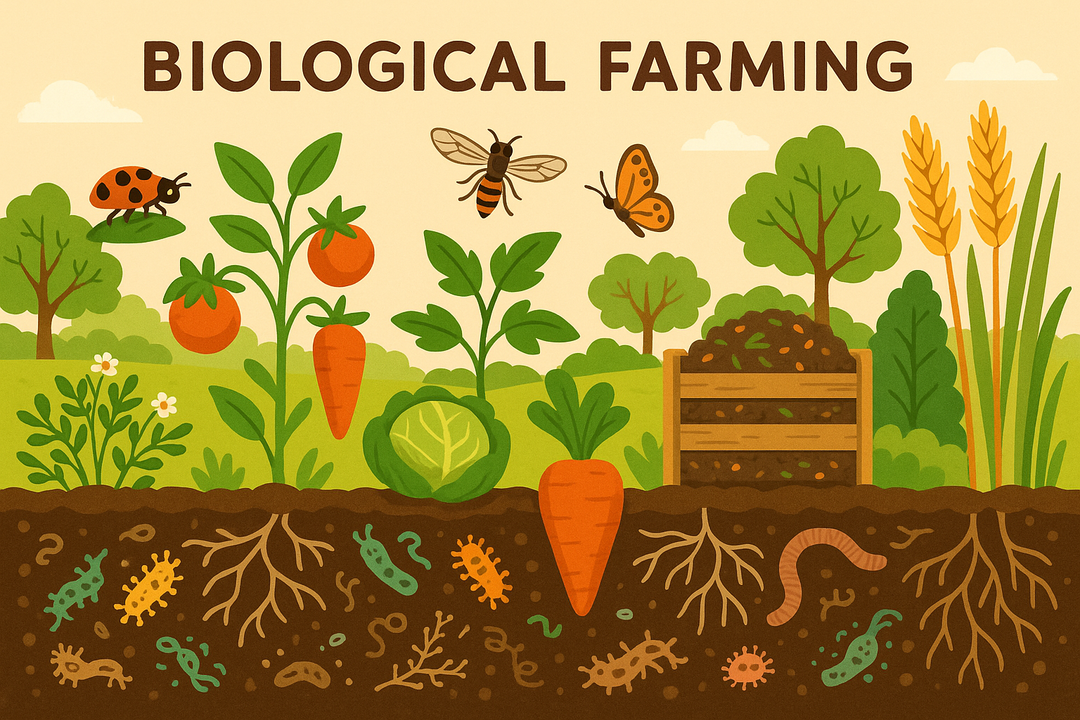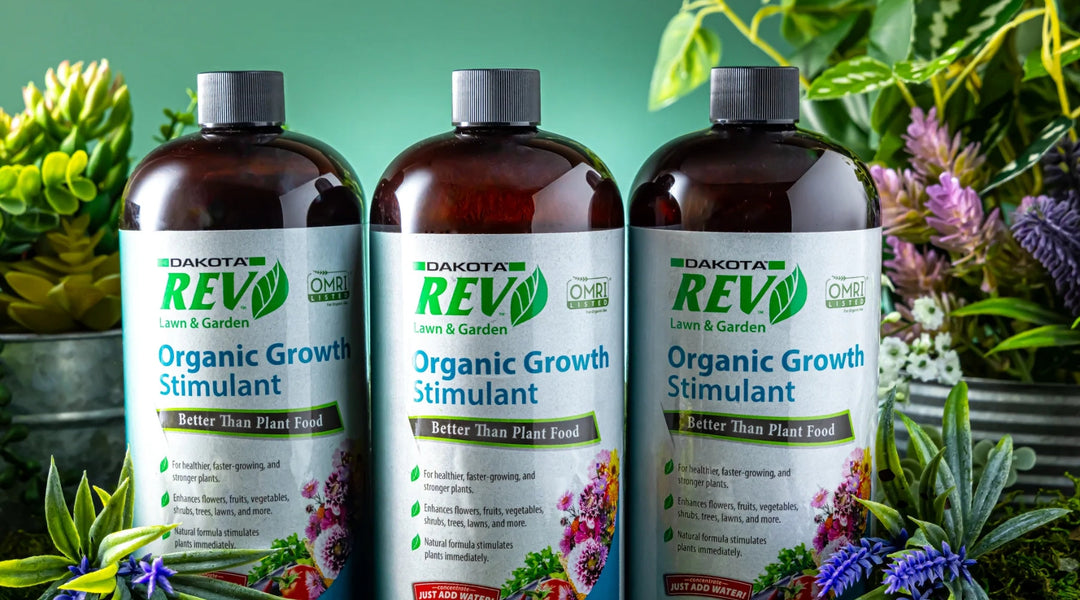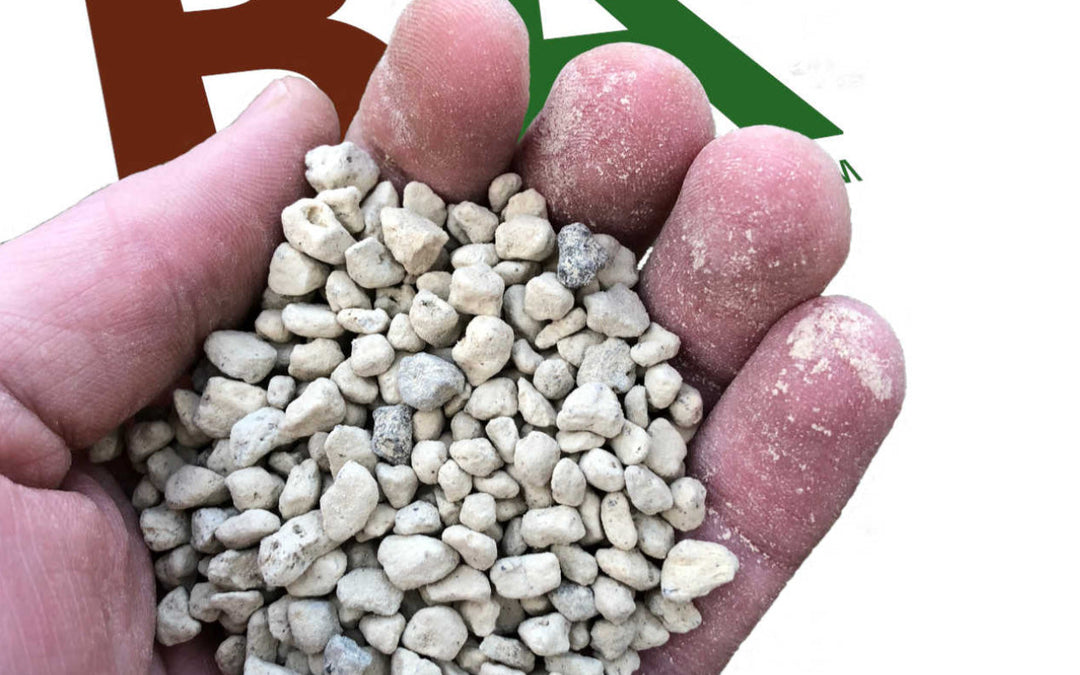Fabulous Phosphorus: Harnessing an Important Nutrient for Plants
It’s no secret that organic fertilizers provide essential nutrients to plants and truly help them thrive. If you see a lush, green garden bursting with blooms and vegetables, the perfect organic fertilizer cocktail is likely a large part of its success.
Among the various types of fertilizers available, phosphorus fertilizer stands out as a key player in nurturing strong root systems, enhancing plant production, and ensuring overall plant vitality. The fascinating world of phosphorus awaits you and your gardening journey.
What is Phosphorus?
Phosphorus is one of three primary nutrients essential for plant growth, alongside nitrogen and potassium. These three main nutrients are typically referred to as NPK: nitrogen, phosphorus, and potassium. They are usually referenced in percentages. For example, if you have a 5-10-10 organic fertilizer, that means it’s five percent nitrogen, ten percent phosphorus, and ten percent potassium. Phosphorous Helps With:
- Photosynthesis
- Energy transfer
- Root development
More efficient photosynthesis and energy transfer improve overall plant health because the plants have more energy to complete normal biological processes. With an appropriate amount of phosphorus on board, plants can absorb water and nutrients more effectively, grow more abundant flowers and fruits, and even fight off harmful diseases, like tomato rot or different types of mold.
Where Does Phosphorus Come From?
Phosphorus is derived from various natural sources found on Earth. One primary source of phosphorus is phosphate rock, which is formed over millions of years through geological processes. Phosphate rock deposits are typically found in sedimentary rocks, where they accumulate in layers over time. These deposits contain high concentrations of phosphorus minerals that can be used to create high-quality phosphorus fertilizer.
Another renewable, organic source of phosphorus comes from plant and animal byproducts. As plants and animals die and decompose, they release phosphorus into the soil. This is why manure and compost can both be excellent organic phosphorus fertilizer methods. However, too much can cause an overload of phosphorus, so it’s always important to consider quantities when choosing your organic fertilizer.
How Do I Choose the Right Phosphorus Fertilizer?
Choosing the best phosphorus fertilizer for your plants might feel a tad overwhelming with so many options available, but breaking down all your different types is easy. To choose the best organic fertilizer with phosphorus, you must first understand the specific needs of your soil and plants.
A soil test can be really helpful to determine current nutrient levels in your soil, including phosphorus. A simple soil testing kit is an affordable, easy way to test the soil and have it analyzed by experts. If you choose a kit from Rocky Mountain BioAg®, we send you personalized recommendations for your soil depending on our findings.
Do some research about the plants you want to grow and see what types of nutrients they need to thrive. Plants that need a lot of phosphorus are typically annuals, legumes, and plants that mainly grow above ground, like lettuce or cabbage. There are very few plants that don’t like some extra phosphorus, but it’s always best to read up on it first.
Combining Phosphorus with Other Nutrients
Combining the use of phosphorus with other organic fertilizers is a great strategy to optimize plant growth and maximize yields, but finding the right fertilizer might seem daunting. Since nitrogen, phosphorus, and potassium are the classic three nutrients, it’s important to understand how they interact and complement one another. Once you find the right combination of organic fertilizers, you can create a balanced fertilization plan specific to your growing goals.
A common approach to combining phosphorus fertilizers and different nutrients is to use a balanced blend. Something with similar percentages of NPK, like ArgoThrive LF Liquid organic fertilizer, provides a well-rounded approach and a full nutrient profile. This balanced approach is great for beginners and those growing more common plants, like tomatoes or grass.
Another strategy for combining phosphorus fertilizer with other nutrients is to apply complementary organic fertilizers at different times throughout the growing season. For example, you might apply an organic fertilizer rich in phosphorus at the beginning of the season to promote strong root development and early growth, followed by a nitrogen-rich organic fertilizer during later periods of the plant’s life cycle to encourage leaf and foliage growth.
Applying Phosphorus Fertilizer
When applying phosphorus fertilizer, it’s essential to follow best practices to ensure optimal results and minimize the risk of nutrient waste. Using the results from your soil test, you can adjust the phosphorus fertilizer application rate for your plants, avoiding nutrient imbalances and environmental issues.
Once you’ve figured out the appropriate application rate, it’s time to consider the application method.
3 Popular Organic Fertilizer Application Methods:
- Broadcasting
- Banding
- Foliar spraying
Broadcasting refers to spreading the organic fertilizer evenly over the soil surface, while banding spreads the organic fertilizer in a narrow band near plant roots. Each application method has benefits. Banding provides a more concentrated amount of organic fertilizer and can target plants quicker, but broadcasting increases the likelihood that all plants will get a good amount of nutrients.
Foliar spraying is one of the most common ways to apply organic fertilizer on larger scales. It involves spraying the leaves and stems directly, leaving plants to absorb it in their own time. Foliar spraying can be used in something as simple as a handheld spray bottle or as advanced as a comprehensive irrigation system.
Why Should I Use Organic Fertilizer?
Improper use of phosphorus and other nutrients can be dangerous, and using organic fertilizer is a responsible way to ensure appropriate amounts of these nutrients are used. Fertilizers that are supplemented with harsh chemicals can lead to nutrient runoff and water pollution and can even harm your plants and soil in the long run.
Understanding what’s in your fertilizer can be the difference between success and failure. Using organic fertilizer is the responsible choice, especially when so many options exist for high-quality, environmentally friendly organic fertilizer.
Phosphorus Fertilizer and Your Growth Goals
Understanding the uses and sources of phosphorus is essential for appreciating the intricate relationship between this nutrient and the environment. As we continue to harness phosphorus for agricultural use, it’s important that we prioritize sustainable practices. At Rocky Mountain BioAg®, we provide the very best organic fertilizers that keep the health of the earth in mind. Whatever your growing goals are, we have it covered.










Leave a comment